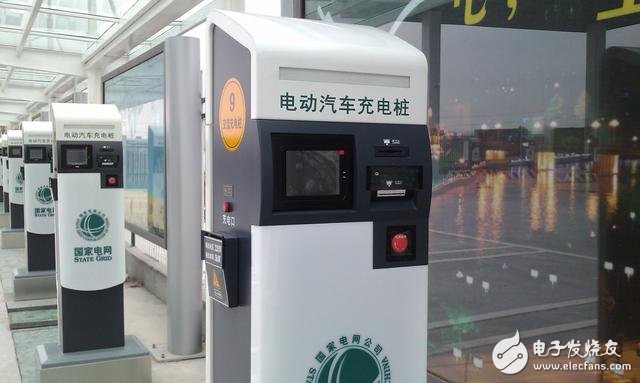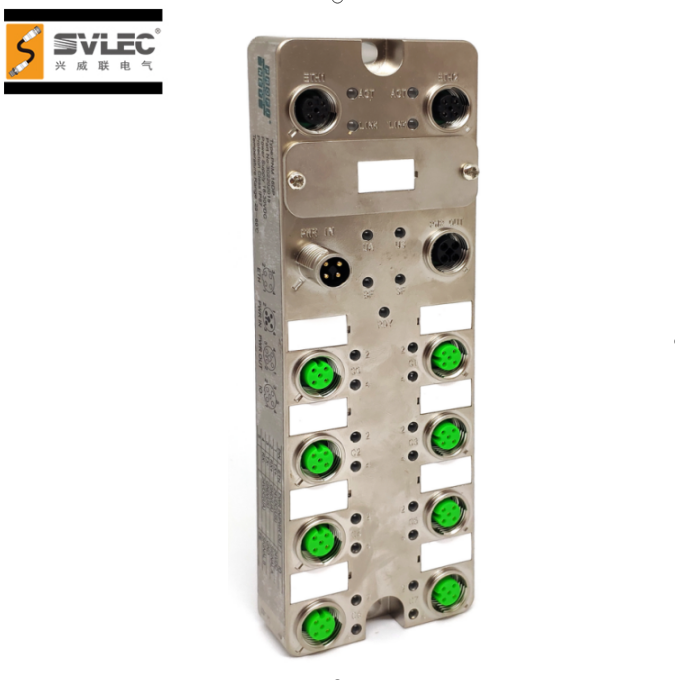Charging pile failure, charging vehicle long-term pile, charging pile no electricity status, charging App information update is not timely, charging positioning is wrong, charging pile layout is not reasonable, etc. is not a case, the new energy car owners do not use the car situation optimism.
On December 26th, Beijing’s last round of this year’s small passenger car index was held, and 19987 people applied for demonstration of the application of new energy passenger car indicators, but the number of indicators that can be allocated was only 2,648. In other words, of the 51,000 individual new energy vehicle indicators in 2017, 17,339 indicators will be prioritized for applicants in 2016, accounting for about 30%.
That is to say, the owners of new energy vehicles are increasing, but is this ready to prepare for the next generation of new energy vehicles?
Since December 16, the north of China's central and eastern regions has experienced the biggest foggy winter this winter. Last week, the smog blocked Beijing City. Beijing and surrounding areas began to implement the single and double number restriction policy. However, due to the convenience of policies, pure electric vehicles enjoy the unlimited policy. However, due to the frequent use of vehicles, the charging problem is also exposed. Start to shake up.
“The charging pile industry is a new industry. There is no standard and no experience. When people see opportunities, they will enter the industry. There will be problems of non-standardization, poor reliability, high failure rate and unreasonable interface. This is the beginning of electric vehicle development. The inevitable problems in the stage, but the problems must be pointed out, give these companies some sense of urgency, can not let the electric car users wait too long." December 23, China Electric Vehicle 100 people executive vice president, Tsinghua University Professor Ouyang Minggao said in an interview with the 21st Century Business Herald.

He pointed out that at this stage, there are also a series of challenges and problems in the development of electric vehicles in China. The charging infrastructure is still not matched with the progress of the whole vehicle, mainly reflected in the slow progress of the conversion of new and old national standards; the interconnection is not smooth; charging safety There is no guarantee; the layout of the public charging infrastructure is unreasonable; the charging facilities cannot adapt to technological advances.
"Electric cars can't push the blame charging facilities, and the charging facilities have been black pots for a long time." On December 17, at the GNEV7 7th Global New Energy Vehicles Conference, the charging pile App leader Huang Shan to the 21st century economy According to the reporter, in fact, at the practical application level, electric vehicle owners hope that the charging pile can be used conveniently and reduce the failure rate. The charging pile operating enterprises also hope that the utilization rate of the charging pile is high.
According to the Energy Bureau's data, as of October this year, the number of public charging piles nationwide has reached 107,000, an increase of 118% compared with 2015. Together with private charging piles, the total number of charging piles has exceeded 170,000, which indicates the basis of charging in China. Facility development has entered a new phase.
The construction data of the top four special calls, the national grid, the star charging, and China Putian's charging pile operating companies are: 33664, 29631, 19212 and 12520, respectively, including AC and DC charging piles.
The problem of charging piles in Beijing is endless
Since the beginning of this year, Beijing's electric car owners have complained that the problem of charging is due to the small number of charging piles and public charging outlets.
A new energy car owner told the 21st Century Business Herald that the charging pile failure rate is high, the maintenance is not timely, the charging pile is small, and the charging is slow. It is a typical problem in the main public charging area. Secondly, the parking space is occupied, the management has problems, and charging. Cards can not be used universally, and the charging piles of the original Putian and State Grid layouts do not support mobile payment, App personal information security, and incorrect charging and positioning navigation.
To this end, the 21st Century Business Herald reporter learned in the Beijing Charging and Charity Public Service Management Platform e-filling website that as of December 26, e-filled network has access to 21 charging operators, and 751 charging stations and DC piles have been laid. For 2011, the number of exchange piles is 3,878, and Beijing will strive to solve the charging anxiety of the owner with a radius of 5 kilometers.
When the 21st Century Business Herald reporters followed the e-filling guidelines and navigated to the underground parking lot of Changlong Tianjie Street in Longhu, Beijing, no obvious electric vehicle charging signs were found. After a few minutes, after inquiring about management personnel, the 21st Century Business Reporter arrived at Longhu. Tianjie underground parking lot Putian charging outlets, the network has a total of 6 fast charge and 4 slow charge, no one idle. A close-up look revealed that two of the four slow-filled piles showed equipment failure, and two of the six fast-filled piles were unusable, and the charging vehicle that was using the slow-filled pile was already charged.
“There are equipment failures every day. We contact the manufacturer. It will take a long time for someone to repair it.†The site manager said that the charging station has a failure rate of 50%.
On November 24th, when the 21st Century Business Herald went to the public charging point of Beijing Electric Power Company on the ground floor of Tengda Building near Baishiqiao, it was told that all five underground charging piles were in a state of no power failure. Three kilometers from this site, there is an idle subject international star charging electric pile, but it is currently in a state of transformation and all cannot be used.
On Christmas Eve, when the 21st Century Business Herald reporter went to the charging station in accordance with the charging route of the Beijing Zhongchuan Beiguang Cultural Media Base charging station, after experiencing 15 minutes of congestion from the destination 500 meters, the 21st Century Business Reporter It was told that the destination was on the right side of the road, and it was more like a dilapidated scrap iron factory.
Charging pile failure, charging vehicle long-term pile, charging pile no electricity status, charging App information update is not timely, charging positioning is wrong, charging pile layout is not reasonable, etc. is not a case, the new energy car owners do not use the car situation optimism.
Some car owners report to the 21st Century Business Herald reporter that when charging at a public charging station, parking costs will account for 50% of the total cost. The cost of using new energy vehicles is not as much as the promotion of manufacturers.
It is reported that Tesla has made it clear that Tesla will charge idle fees for owners who have fully charged the car at the super charging station but have not left quickly. For every minute, they will charge the owner $0.4, equivalent. The RMB is 2.78 yuan. For owners who leave within five minutes, the idle fee will be cancelled.
Standardized charging policy
As early as April this year, the National Energy Administration announced the "2016 Energy Work Guidance Opinion" to comprehensively promote the construction of electric vehicle charging facilities. In 2016, it plans to build more than 2,000 charging stations, 100,000 decentralized public charging piles, and private dedicated charging piles. 860,000, the total investment of various types of charging facilities is 30 billion yuan.
Previously, local governments to encourage social capital to build operations, subsidize more than 30% of investment costs, and stimulate the enthusiasm of social construction, but the emerging companies that were still talking about the "capital + Internet" model are now beginning to suffer. .
On December 11th, at the 2016 China Electric Vehicle Charging and Replacement Service Innovation Summit Forum, Zheng Jiejie, deputy director of the National Energy Administration, pointed out that the current new energy vehicles are in a period of rapid development, and the construction of electric vehicle charging and replacing infrastructure has been fully rolled out. . Charging and replacing electricity has become one of the key factors affecting the development of new energy vehicles in China. In the process of rapid development, it also faces the problem of standardization of vehicle piles and charging piles into the community.
On December 17, at the Global New Energy Conference, as the charging operator for private car owners, Yiwei Energy CEO Zeng Weihua publicly stated: “The proportion of customers of Yiwei Energy to the pile has exceeded 1:2, that is, one pile corresponds. Two active users.
He believes that in terms of operations, they have spent a lot of effort to increase customer usage. The fuel car is the biggest competitor of the electric car. If the fuel car occupies the parking space of the charging pile, the pile is more waste. Secondly, he believes that there is a need for a unified charging standard. "If a charging station cannot charge all brands of cars, it is very painful for our operation."
Ouyang Minggao told the 21st Century Economic Reporter that "the new national standard for charging was released at the end of 2015, but the progress has not been great this year. According to the test of the enterprise, the charging of the new national standard model has encountered great difficulties. Recently, the National Energy Administration issued a document. It is required that from January 1 next year, the new car must be implemented in accordance with the new national standard. By the end of 2017, the old standard must be updated."
However, the trouble for operators is not limited to this. The confusion of Wang Changqing, the general manager of Star Charging Beijing, lies in where the users are.
“Star charging has built more than 3,000 piles in Beijing, but even though the scale is already large, there are still many users asking 'Where is your pile, why can't I find your pile'. Of course, operators spend My money goes down, it is to pay tuition for this industry, because we do not know where the electric car will be sold, even if you know where to sell, but will he use it there?" Wang Changqing said.
However, he believes that in the future, user data will accumulate to a certain extent, and it is possible to clearly arrange the charging pile. "If we can know the user's needs, we can build a charging network that is ideal for use."
For the owners and operators, there is also a news. According to the requirements of the Energy Bureau, the next step is to continue to do the construction of charging piles and increase the number of charging piles. It is necessary to optimize the layout of the project, standardize the charging interface, and achieve interconnection and interoperability.
On December 22, the National Development and Reform Commission and the Energy Bureau issued the “13th Five-Year Plan for Power Developmentâ€, which mentioned the construction of charging facilities. By 2020, more than 12,000 centralized charging and replacement stations will be added, and more than 4.8 million decentralized charging piles will be built. Basically, a moderately advanced, intelligent and efficient charging infrastructure system will be built to meet more than 5 million electric vehicles nationwide. The charging needs of the car.
SVLEC provide IP67 rated fieldbus modules are an important component of machine and system installations. They replace complex parallel wiring, saving space in the cabinet. Due to its mechanical properties, SVLEC Metal EMC housing is designed for applications in harsh industrial environments. Nowadays SVLEC provide EtherNet IP Module , Profinet Module , EtherCat


Bus Module,Ethercat Remote Module,Ip67 Profinet Module,EMC Fieldbus Modules,EtherCat module , CC-link Module , EtherNet IP module
Kunshan SVL Electric Co.,Ltd , https://www.svlelectric.com